Sparrows
Too often in the shadow of warblers. Concludes with Paul Laurence Dunbar's "The Sparrow."
Warblers can be dazzlingly colorful; sparrows are mostly brown—but look at a Golden-crowned (Zonotrichia atricapilla) or a Chipping Sparrow (Spizella passerina) and tell me they aren’t beautiful.
Let’s revisit Saltmarsh Sparrows (Ammospiza caudacuta), discuss Savannah (Passerculus sandwichensis), and touch on others.
Saltmarsh Sparrow (Ammospiza caudacuta)
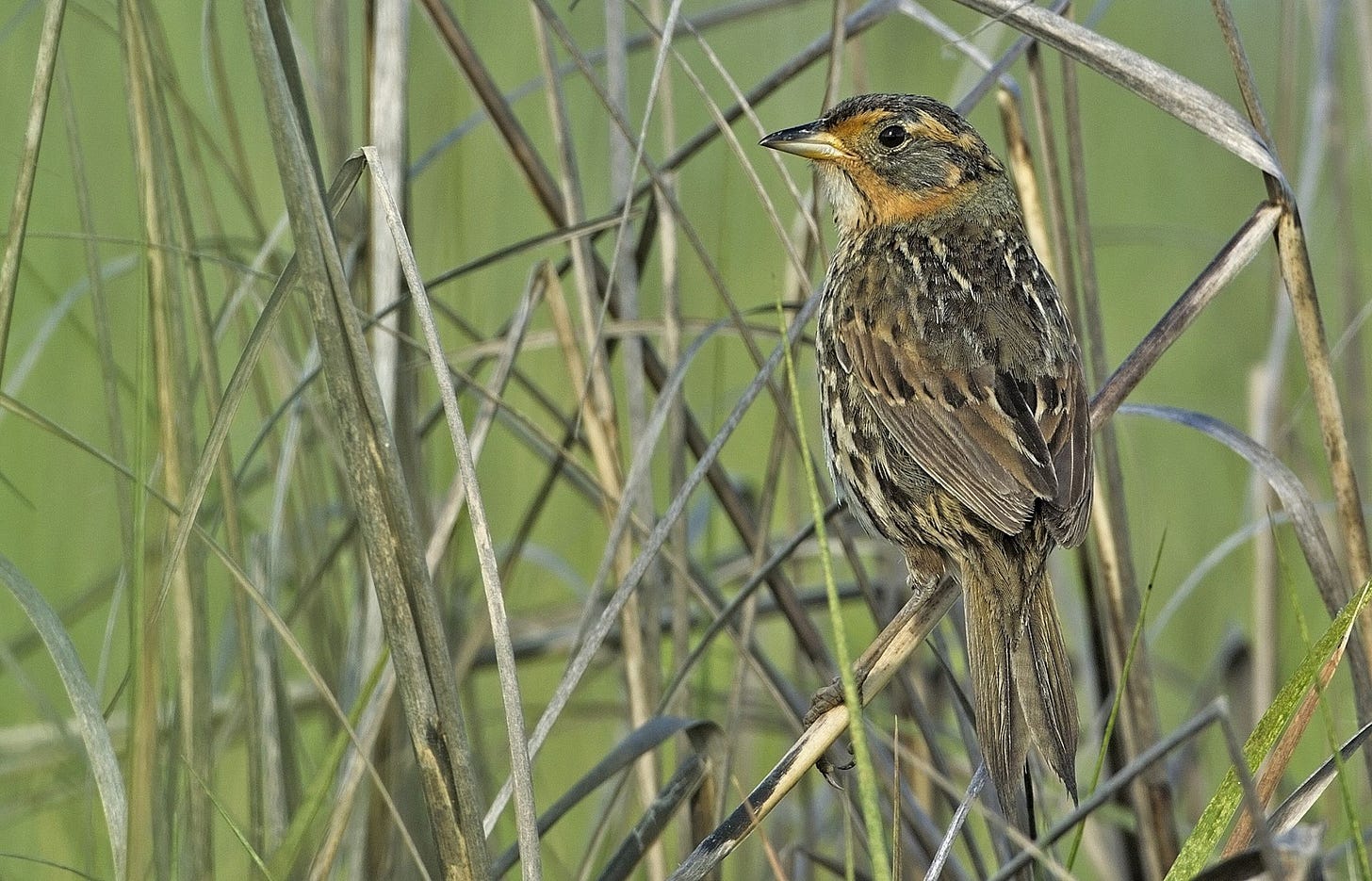
This species breeds in the Northeast United States’s salt marshes. In winter they go as far south as Florida. Saltmarsh and Nelson’s Sparrows (Ammospiza nelsoni) used to be one species: Sharp-tailed Sparrow. A Saltmarsh has a longer bill, a Nelson’s has a rounder head.
Along with the Seaside Sparrow (Ammospiza maritima), these species sing “like you dialed a fax number.” Only male Saltmarsh Sparrows sing; female Nelson’s and Seaside sometimes do.
Male Saltmarsh Sparrows might sing, but they don’t defend their territories, which tend to overlap, and do nothing to raise young. Saltmarsh Sparrows don’t form pairs. Males will “mate with any females that enter [their territories]. Females also rove around and mate with many different males.”
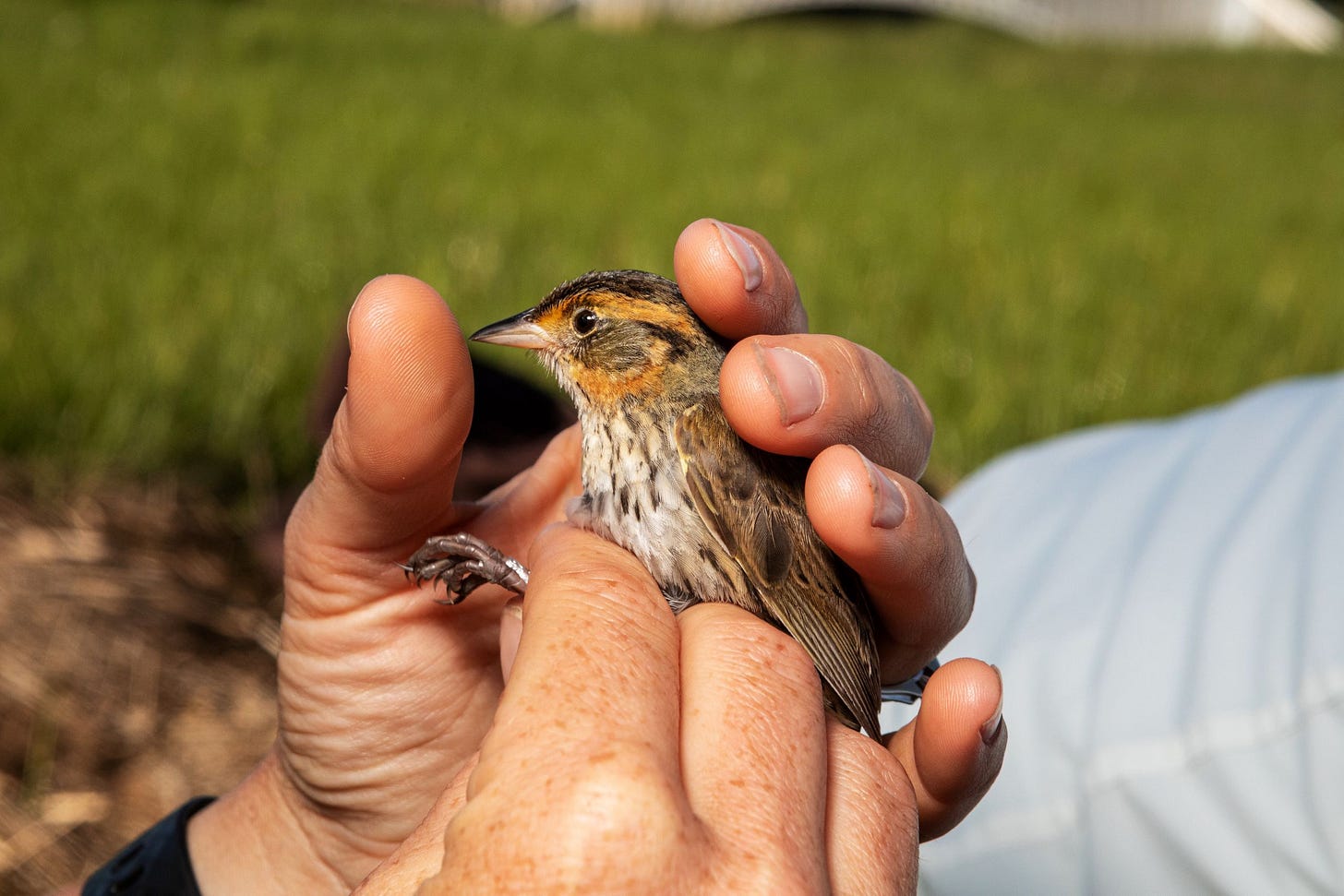
Coastal sparrows have bigger bills, as a bird’s bill can regulate body temperature. Higher summer temperatures along the coast—beaches, salt marshes, etc.—can make for increased bill size. The Seaside Sparrow, being seaside, has a “substantial bill.” A Saltmarsh Sparrow’s is also notable. The Atlantic’s “Why the Sparrow’s Beak is an Evolutionary Puzzle” says:
[Paul Greenberg’s] analysis…confirmed that saltmarsh sparrows do indeed sport bigger bills, with roughly 40 percent more surface area than other sparrow species.
“Yes, there is a very strong tendency for saltmarsh sparrows to evolve bigger bills that are sexually dimorphic,” said Greenberg. “In other words, the bills of the species are bigger, but in particular the males’ bills are bigger. And sexual dimorphism in bill size is not common in sparrows. But the saltmarsh sparrows really stand out as having sexual-dimorphic bills.”
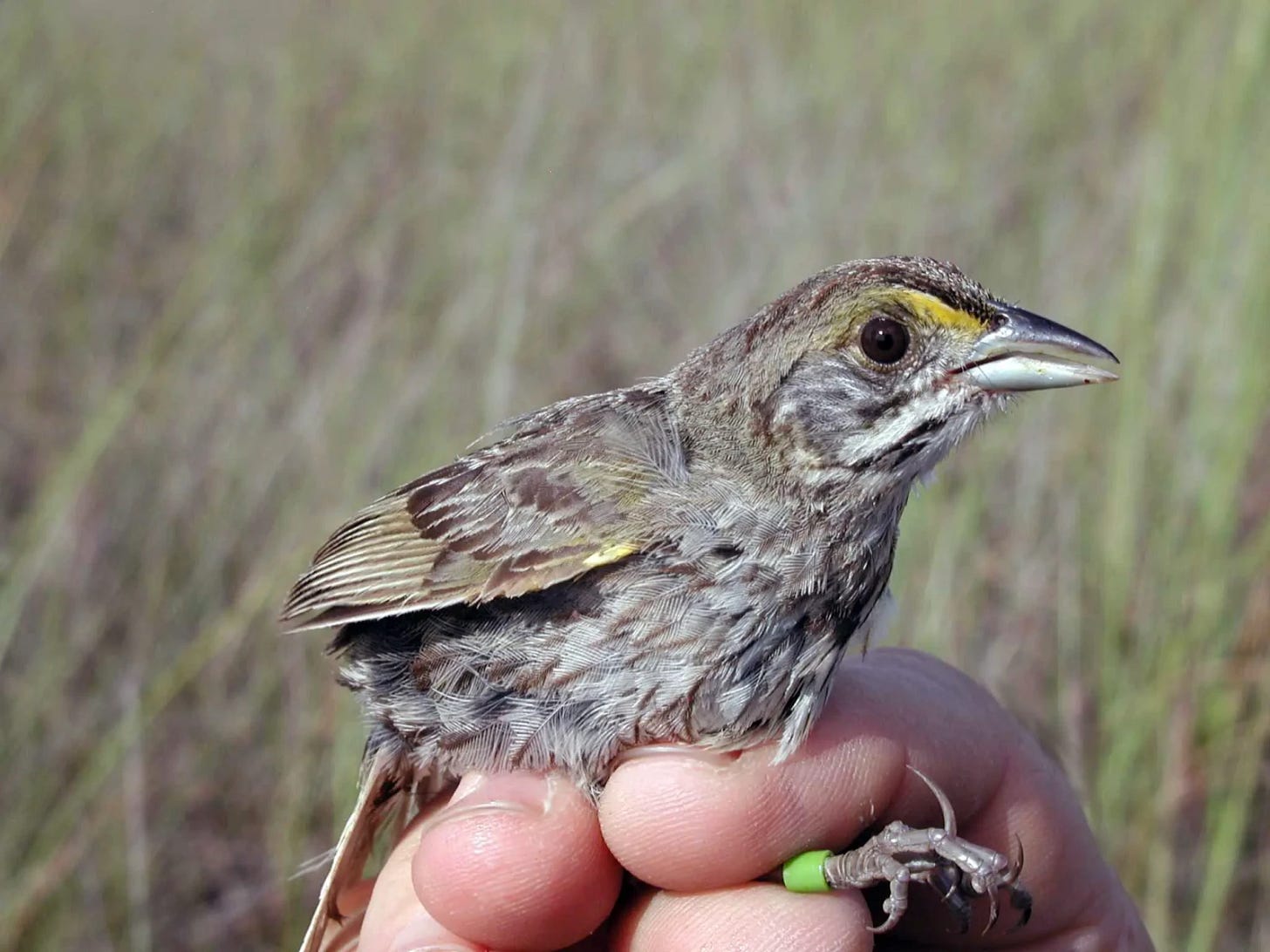
An article in Living Bird predicts Saltmarsh Sparrows could be “among the first extinction casualties from climate change and sea-level rise.” Marsh habitat is structured by tidal flooding. Saltmarsh Sparrows prefer high marsh zones.
With increased flooding as sea level rises, marsh ecosystems will be restructured. Different marsh zones have different soils, thus different vegetation. High marsh, which Saltmarsh Sparrows prefer for nesting, has saltmeadow cordgrass, needlerushes, and saltgrass. The Saltmarsh Sparrow population has been dropping 9% per year and could collapse within 50.
Savannah Sparrow (Passerculus sandwichensis)
Savannah Sparrows are common, but uncommonly beautiful. Rick Wright says they can be “confiding and tame, the Savannah Sparrow is worth getting to know well.”
There’s the Ipswich Savannah Sparrow (Passerculus sandwichensis princeps), large and pale, first observed in 1868 in Ipswich—land of fried clams and John Updike—on what’s now “known as Crane or Crane’s Beach.” They breed in coastal Nova Scotia. There’s also the Large-billed Savannah Sparrow (Passerculus sandwichensis rostratus/atratus). As the name suggests, they have large bills. They breed in Baja California and Sonora.
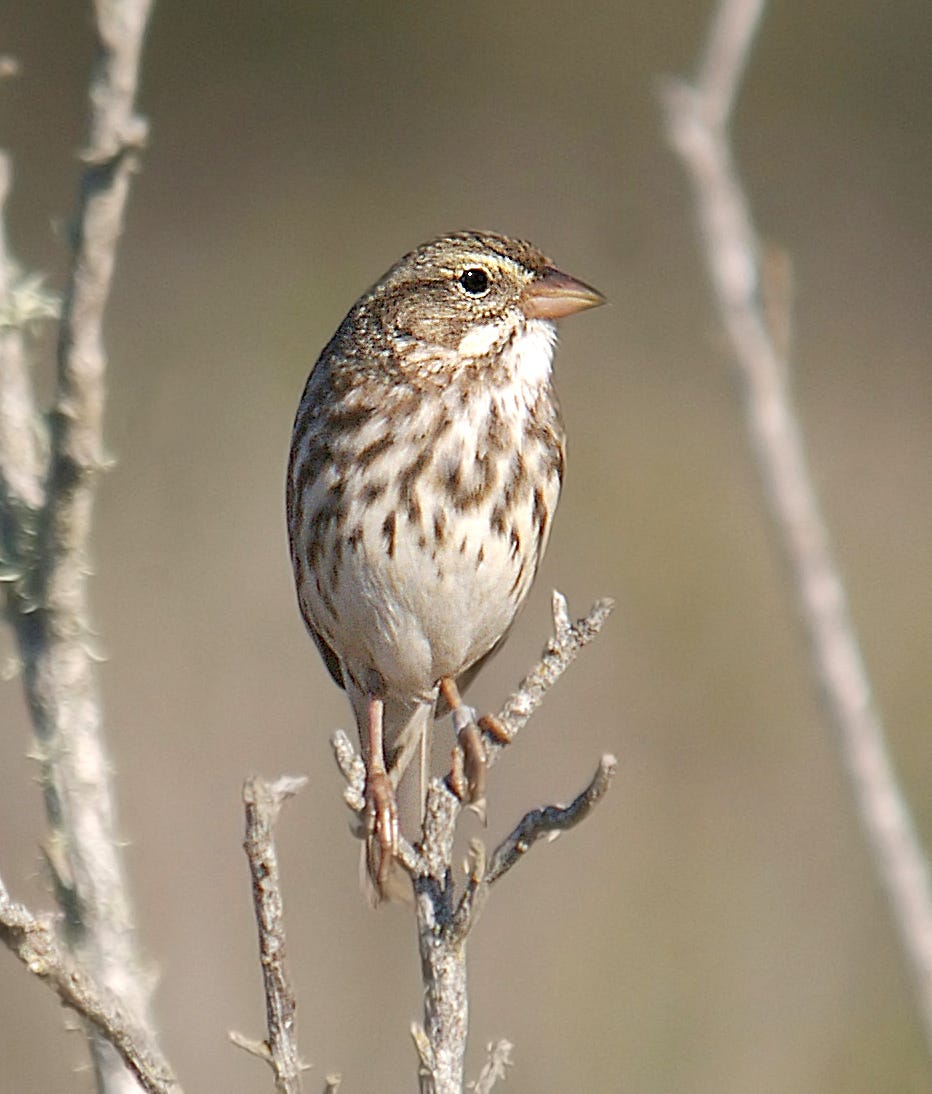
The dark and streaky Belding’s Savannah Sparrow (Passerculus sandwichensis beldingi, Passerculus sandwichensis [guttatus Group]) is rare, but “common on the marshes of San Diego Bay, and the Tijuana Slough National Wildlife Refuge.” The San Benito Savannah Sparrow’s (Passerculus sandwichensis sanctorum) “extent of occurrence” is just 16 square kilometers/6.17763 square miles.
Chipping Sparrow (Spizella passerina)
This was one of the first sparrows I learned to ID. The rusty mohawk; the black through the eye; the lack of streakiness. Many sparrows are a mess of streaks.
The Chipping Sparrow was a gateway to the world of sparrows and the world of birdsong. Chipping Sparrow and Pine Warbler (Setophaga pinus) have similar trills. The sparrow’s is machine-like; the warbler’s sounds musical.
Song Sparrow (Melospiza melodia)
Amiably ubiquitous with a beautiful song. The male Song Sparrow (Melospiza melodia) sings to attract mates and defend territory. Mates are attracted not just to the prettiness of the song, but how well the male learns new parts. There are 24 subspecies, I wrote about Melospiza melodia atlantica a while ago.
American Tree Sparrow (Spizelloides arborea)
Undeniably handsome. The American Tree Sparrow chapter of the Peterson Reference Guide to Sparrows of North America describes them right off the bat as a “handsome, cheerful-voiced bird.”
Their handsomeness makes them tough to confuse with other sparrows.
explains, in The Crystal Performance of American Tree Sparrows, this unique species was “recently re-classified to its own genus: Spizelloides.”White-throated Sparrow (Zonotrichia albicollis)
Even though they don’t look very similar, these hybridize with Dark-eyed Junco—two birds of colder temperatures. Once it starts getting chilly, neither is tough to find.
Golden-crowned Sparrow (Zonotrichia atricapilla)
I don’t know too much about this species. All I know is it’s a beautiful bird—one of the first species I took pictures of.
The Cornell Lab says gold miners in the Yukon called Golden-crowned Sparrow “no gold here” bird—except its crown. The bird’s song, “sometimes described as ‘I’m so tired’ or ‘oh, dear me,’” was syllabically and melancholically akin to “no gold here.”
Fox Sparrow (Passerella iliaca)
Red (Passerella iliaca) is what I picture when I think of a Fox Sparrow. There’s also Sooty (Passerella iliaca [unalaschensis Group]), Thick-billed (Passerella iliaca [megarhyncha Group]), and Slate-colored (Passerella iliaca [schistacea Group]).
It’s easy to get jazzed about warblers, but we should get jazzed about sparrows too. A warbler is beautiful—yellow, blue orange—but a sparrow is beautiful in idiosyncratic ways that take more effort and awareness to see.
The Sparrow
A little bird, with plumage brown, Beside my window flutters down, A moment chirps its little strain, Ten taps upon my window–pane, And chirps again, and hops along, To call my notice to its song; But I work on, nor heed its lay, Till, in neglect, it flies away. So birds of peace and hope and love Come fluttering earthward from above, To settle on life’s window–sills, And ease our load of earthly ills; But we, in traffic’s rush and din Too deep engaged to let them in, With deadened heart and sense plod on, Nor know our loss till they are gone.
- Paul Laurence Dunbar
Recommended Reading:
Peterson Guide To Sparrows - Rick Wright. An early Christmas gift to myself (along with Ferns, Spikemosses, Clubmosses, and Quillworts of Eastern North America). Wright’s book made me want to write this and was indispensable in doing so.
Introducing the Grasshopper Sparrow Journals. Observations of Grasshopper Sparrows at Park 566.
and .Copper Mining: Totally Not Green, But Totally Needed for “Green” Energy,
. An example of “destroying the environment to save it.”Pines - nobles of the global woodlands,
. There is a lot to know about pines—cones, needles, pitch—more than you might think.





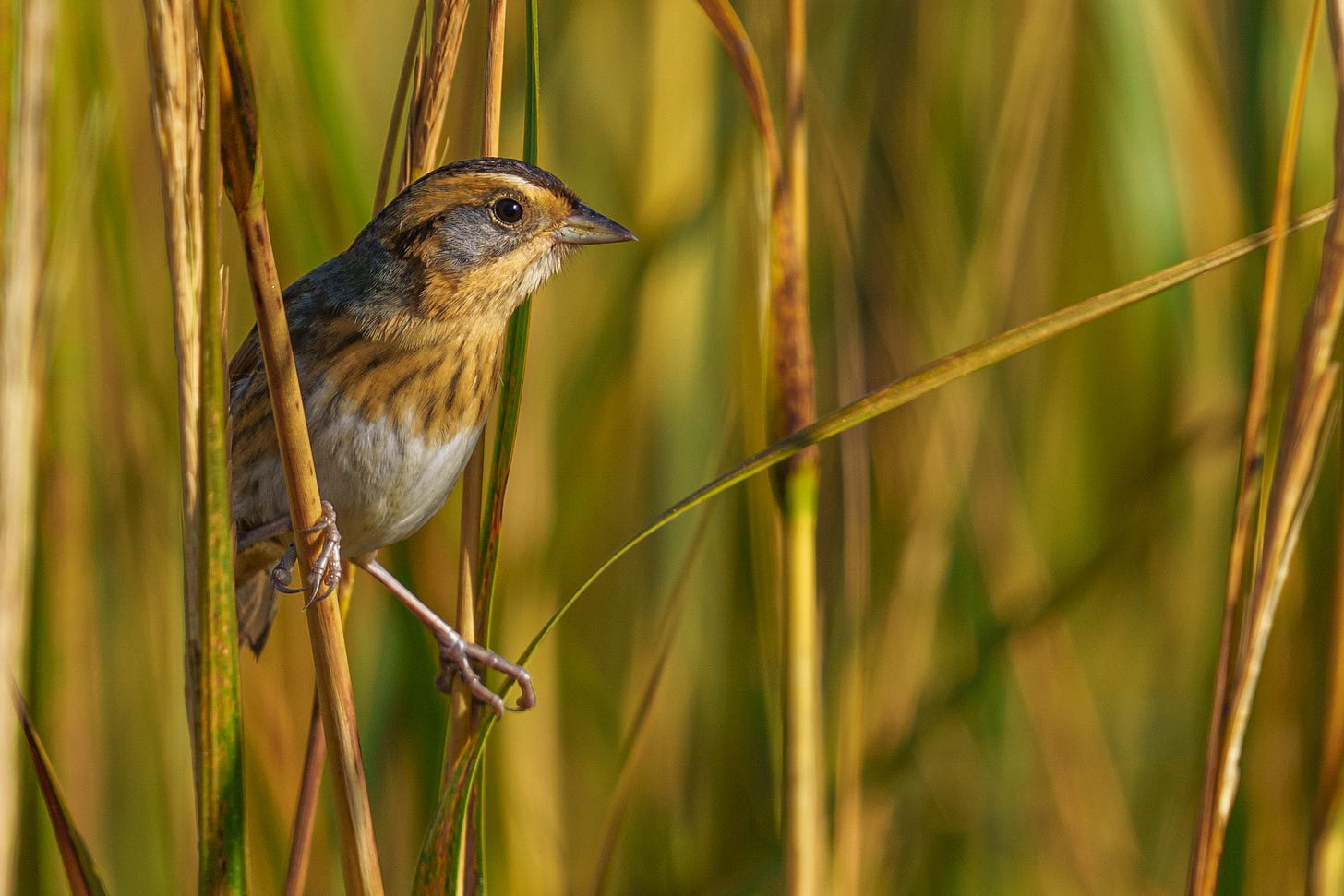

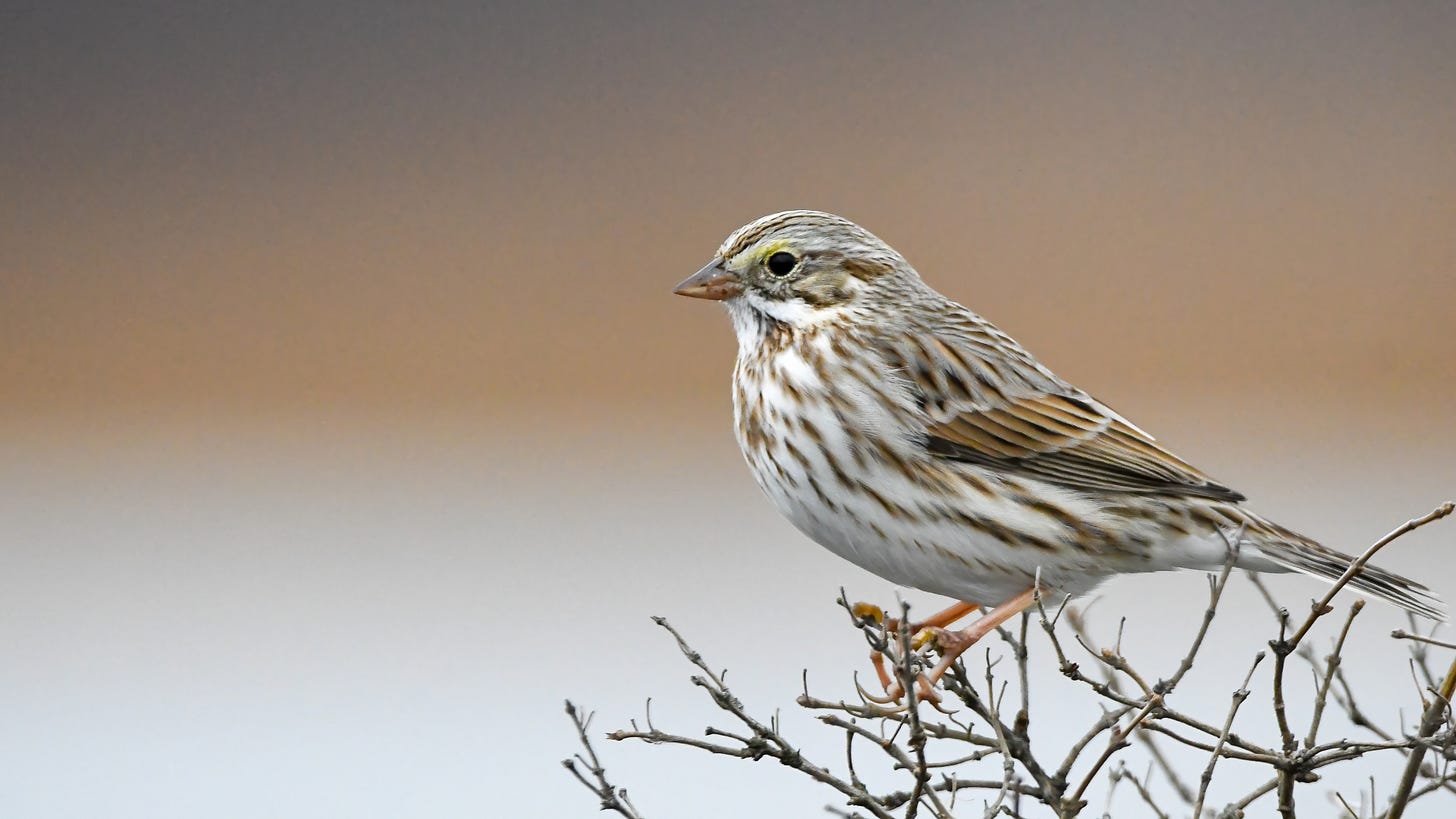
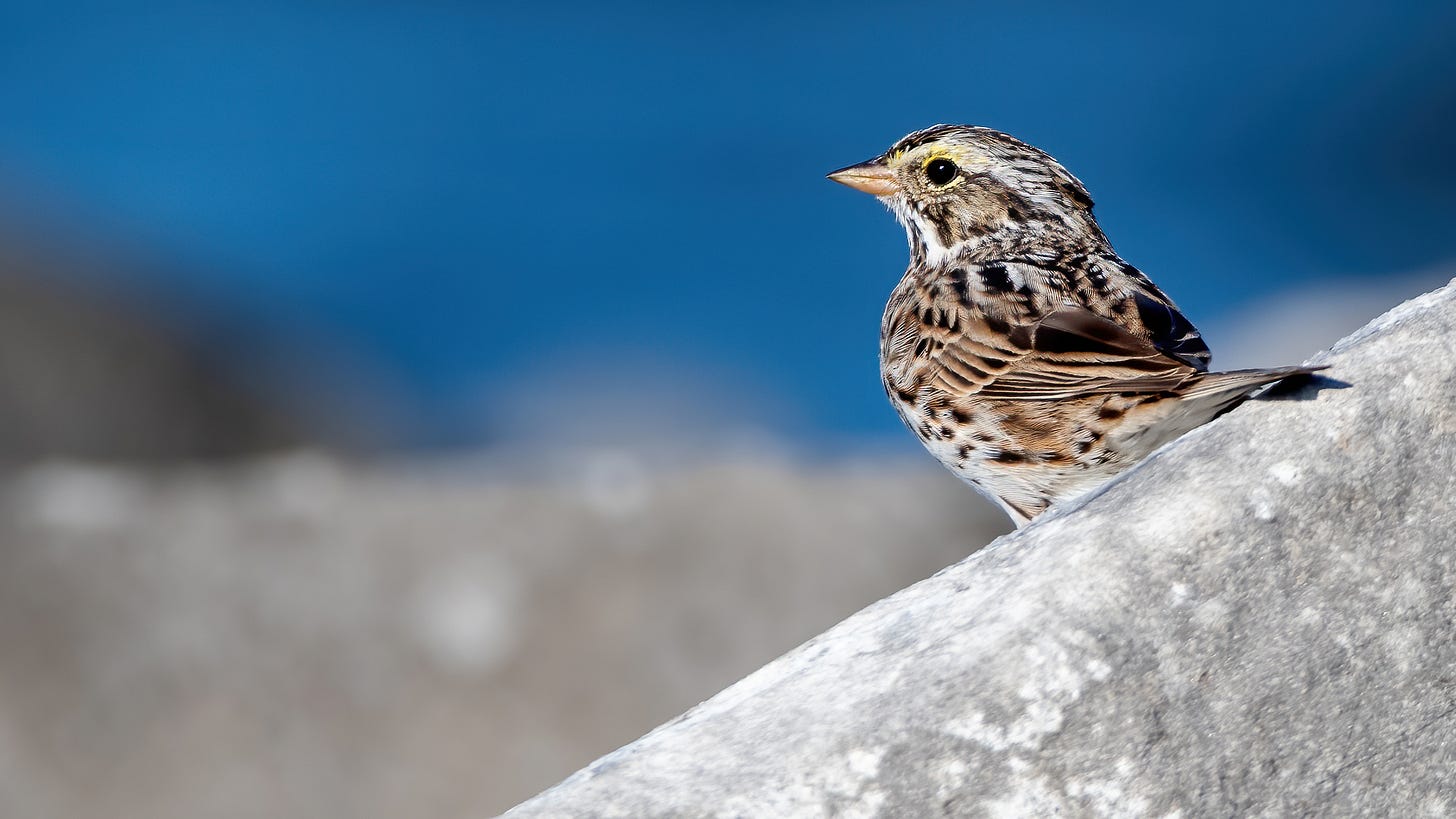
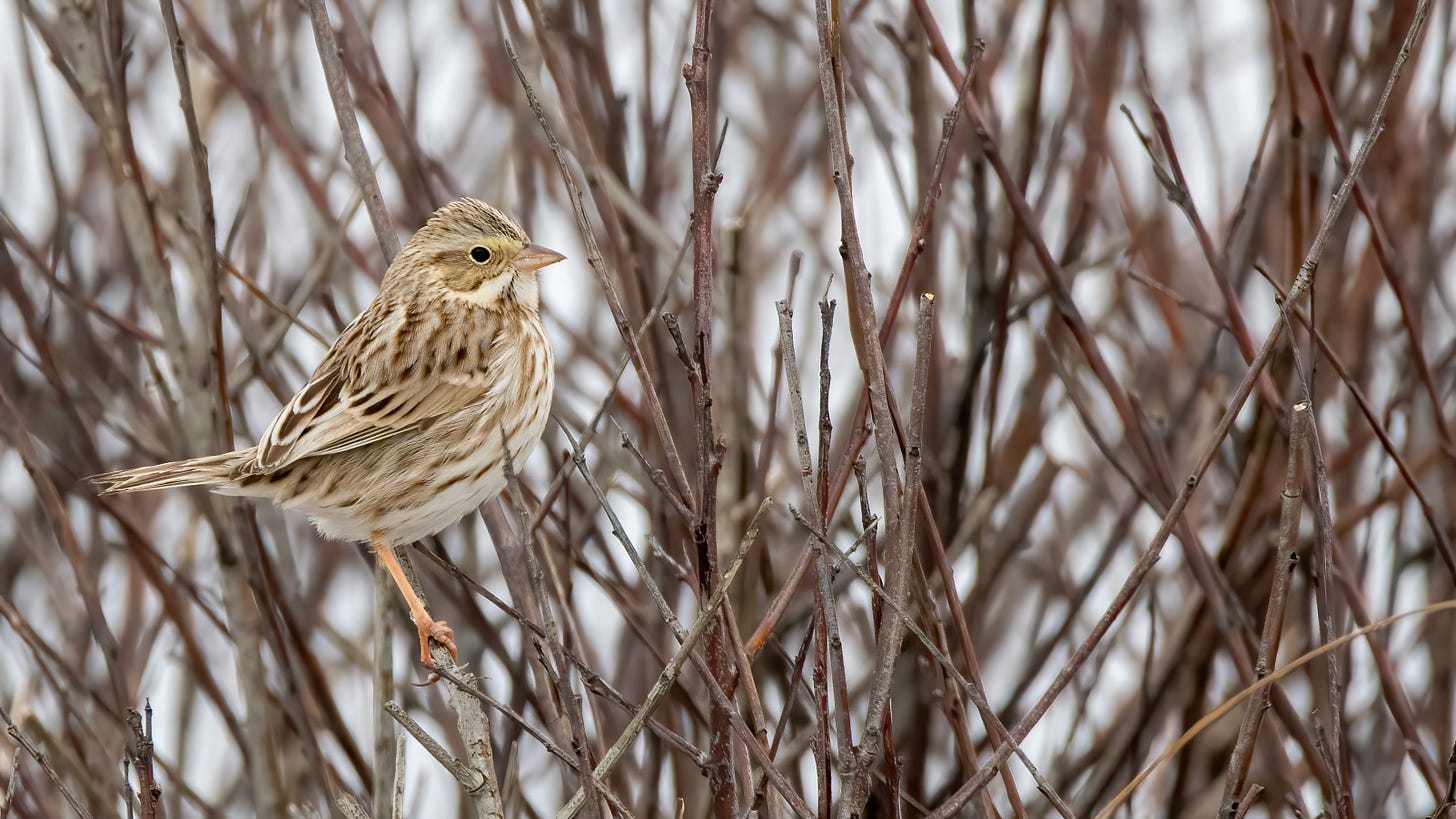


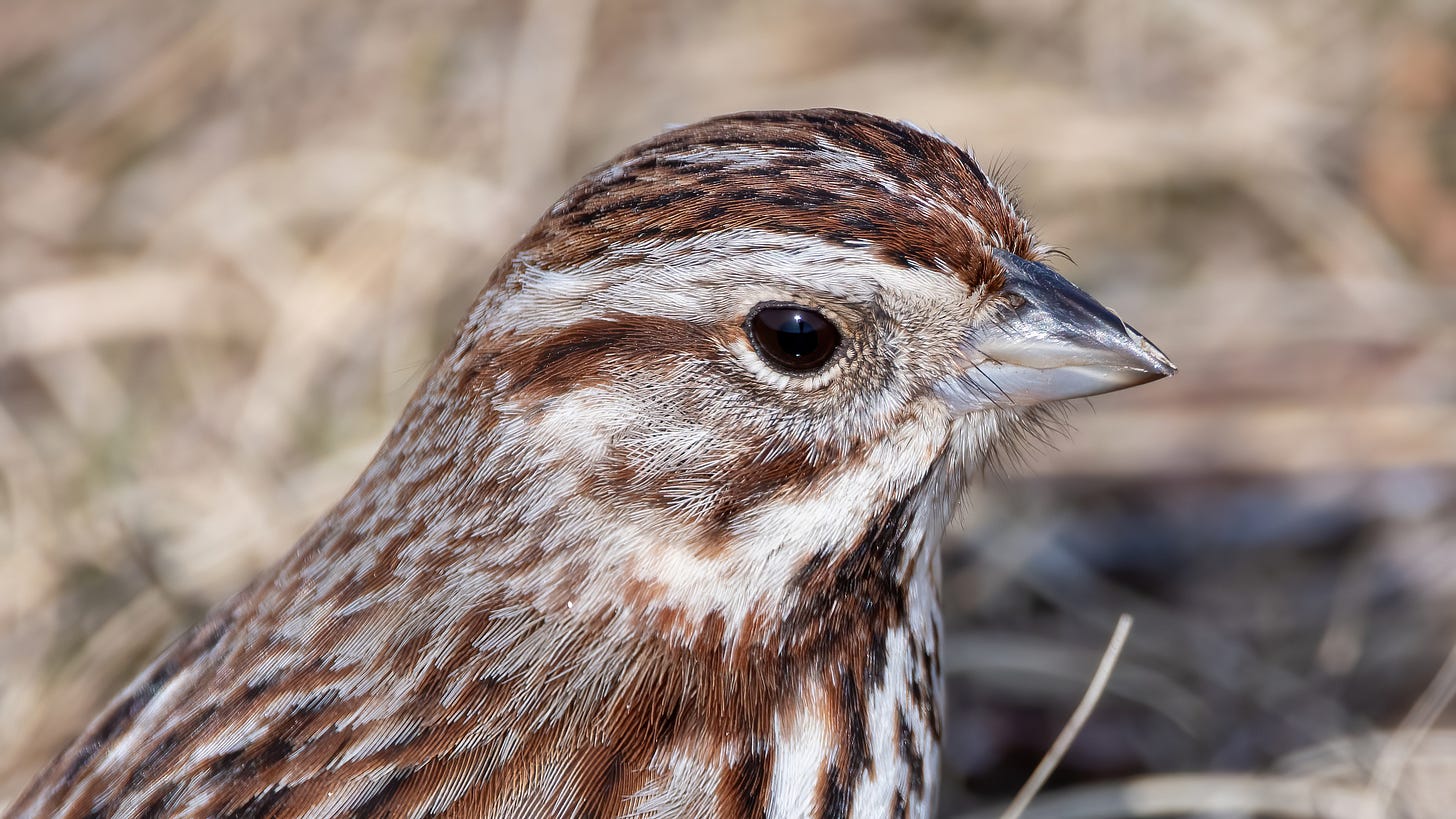
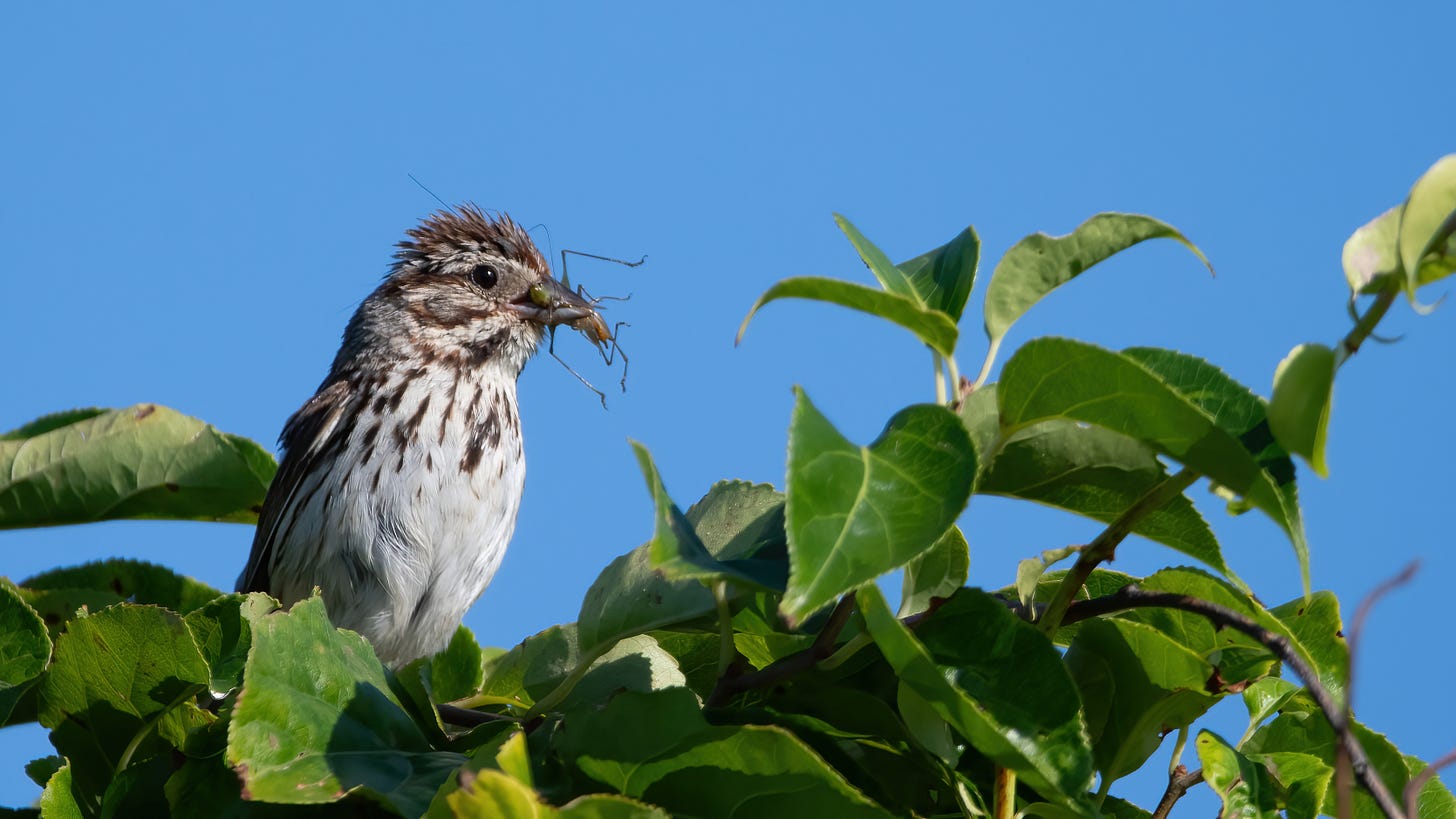
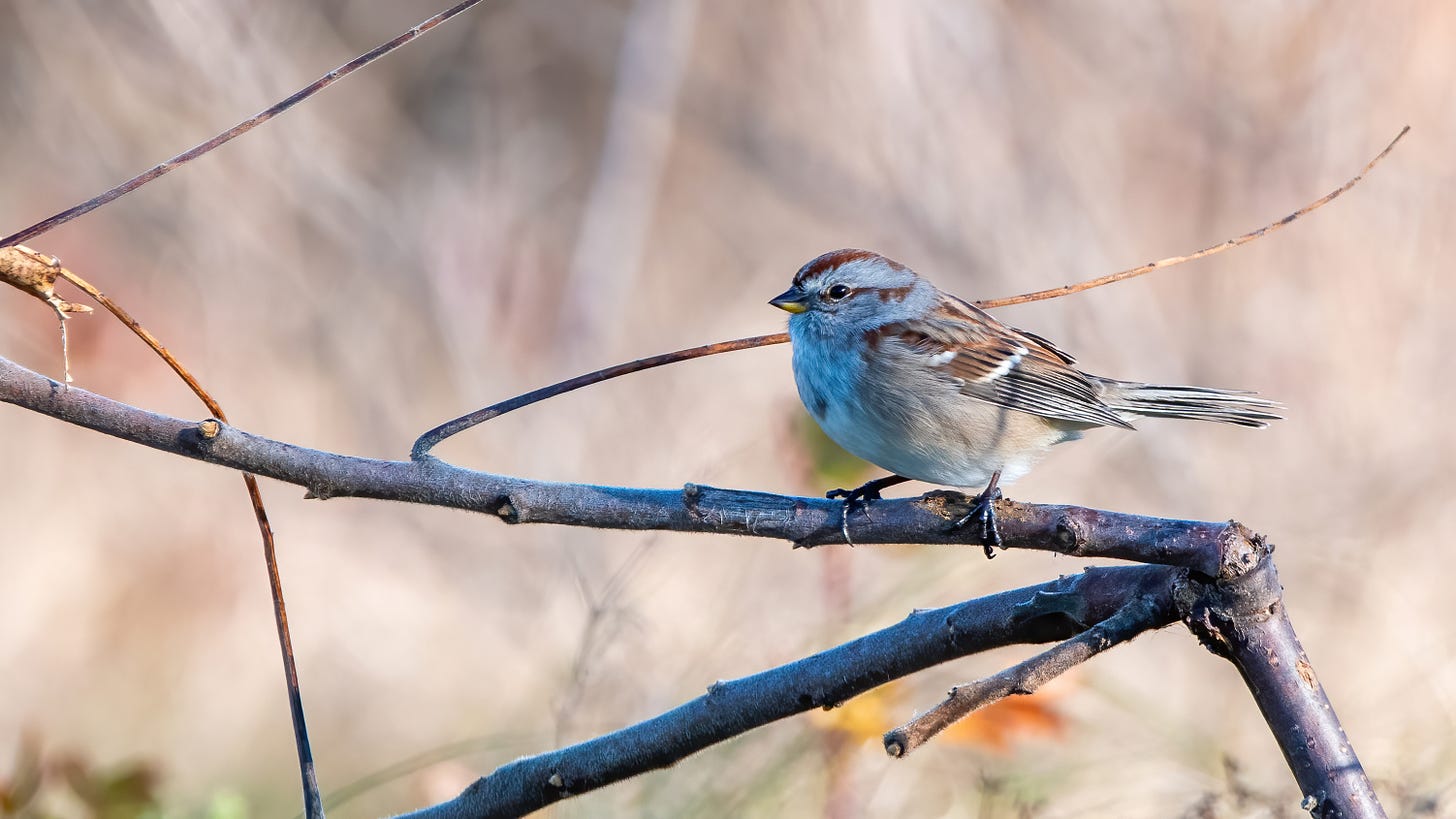
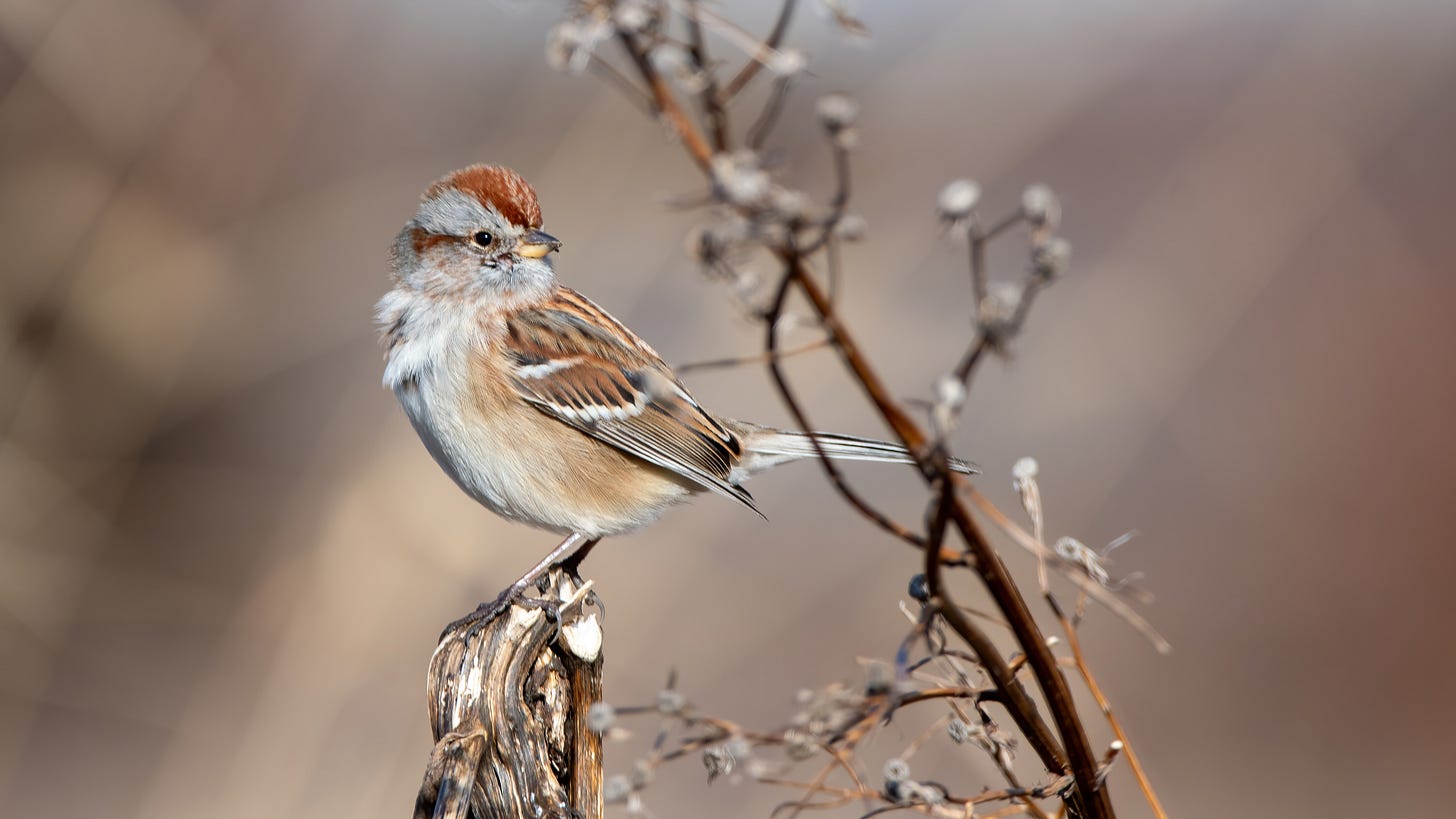
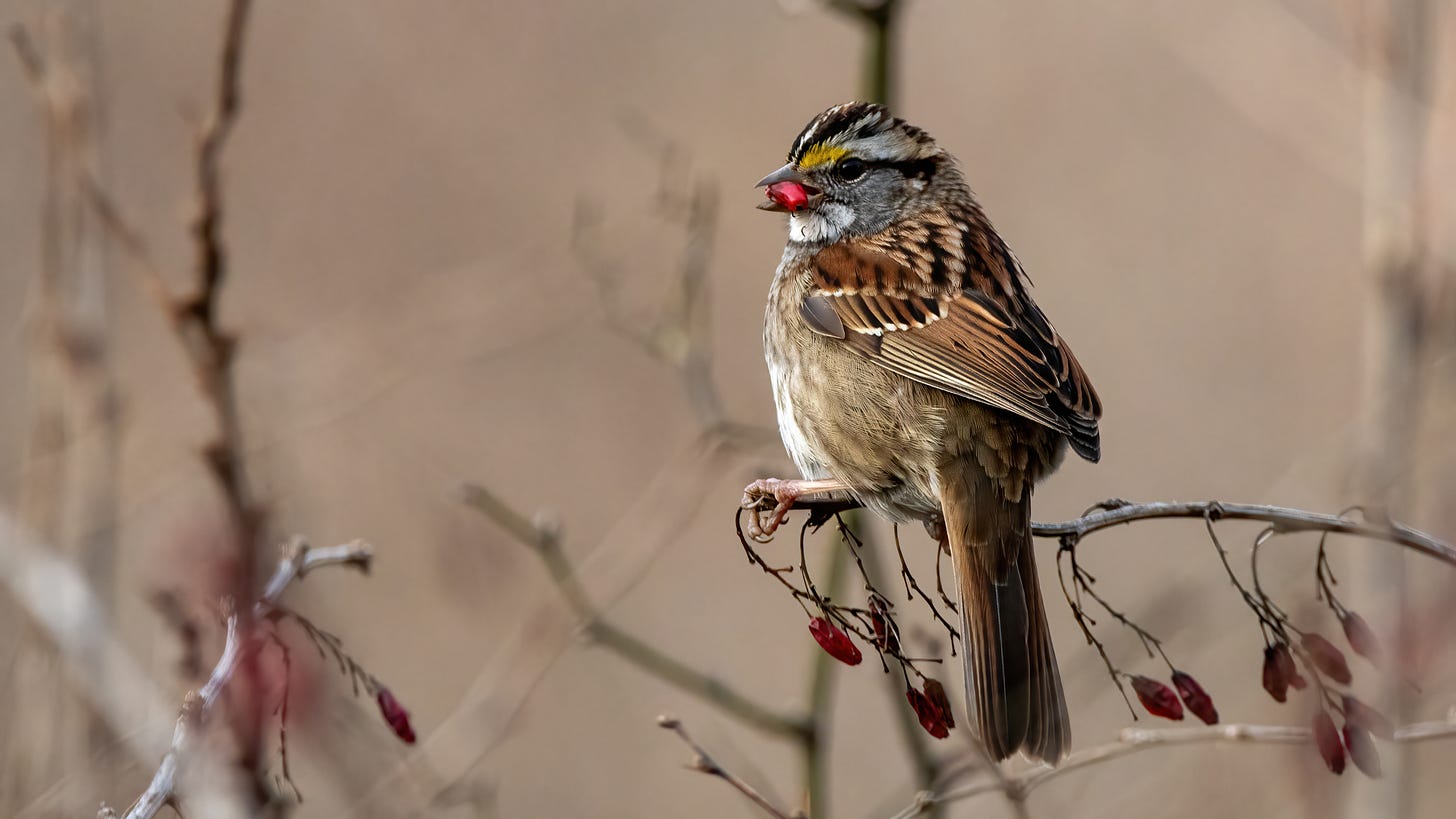
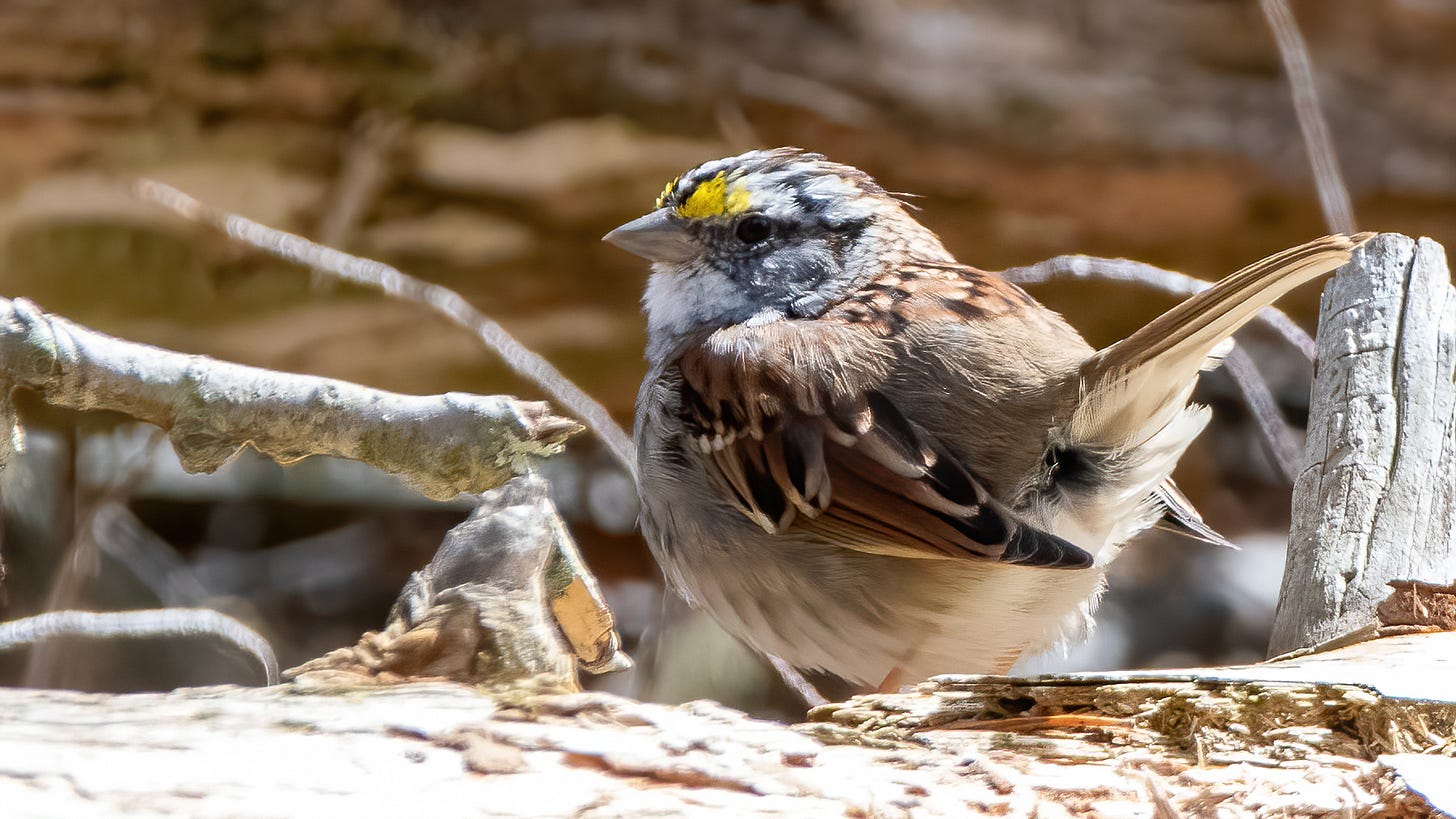

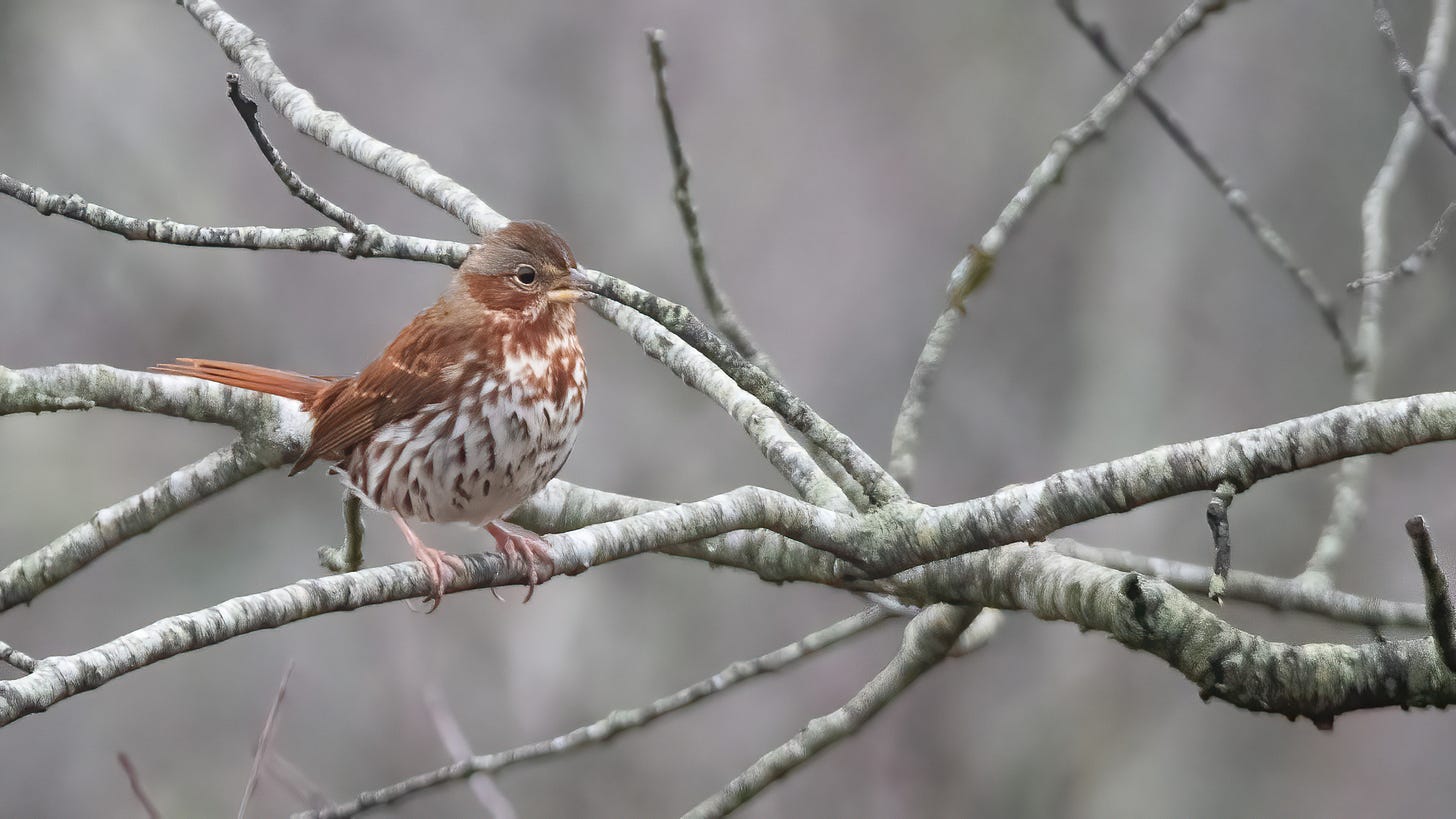


Thank you for this guide. I might not marvel at every sparrow but I always appreciate them, especially the white-throated with that dot of sun on their heads.
Appreciate sparrows more and more, especially the wintering ones. The fact that I haven’t seen a Fox Sparrow this year is a constant agony